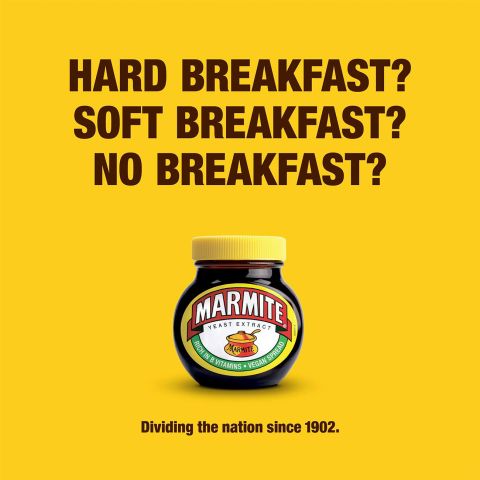Introduction
Backyard bird feeding is a convenient way to enjoy wildlife. What has made ‘ watching birds’ the fastest growing hobby in the country, second only to gardening? What ever it is, watching birds, like watching fish or other animals, seems to make people feel good.
Backyard bird feeding can, however have an adverse effect on an individual bird. There may be a incidence of disease and birds injured by flying into windows. Take precautions to minimize these problems.
Getting Started
No matter where you live, you can put food outside your door, and some creature, feathered or furred, will show its appreciation and make an appearance. That’s all it takes. Once you get started, it’s hard to stop.Before you know it, you’re learning bird names. After awhile, you’ll start to recognize individuals and the messages in their behavior and song.
When you get to the point where you want to attract and “keep” a particular species, what you do will be determined by where you live, and the time of year. How can you find out which birds to expect? A bird field identification book has pictures of different birds and will help you find the names for the birds you’re likely to see.
Feeder Selection
Regardless of the season, food that sits on the ground for even a short time is exposed to potential contamination by dampness, mold, bacteria, animal droppings, lawn fertilizers and pesticides. It is best for the birds’ sake, to use a feeder. You can start simply with a piece of scrap wood, elevated a few inches above the ground. Add a few holes for drainage and you’ve built a platform feeder.
It won’t take long before the birds find it. Whether you buy one or build one, eventually you’ll find yourself looking at commercially manufactured feeders. There are literally hundreds to choose from. How do you make the “right” choice? What makes a feeder “Good?”
First consider placement
Where do you want to watch your birds? From a kitchen window… a sliding glass door opening on to a deck… a second story window? Pick a location that has year-round easy access. When the weather is bad and birds are most vulnerable, you may be reluctant to fill a feeder that isn’t in a convenient spot near a door or accessible window. Also consider the “mess” factor. Pick a location where discarded seed shells and bird droppings won’t be a clean-up problem.
Once you’ve determined you’re going to put your feeder, you’re ready to go shopping. In addition to good looks, think about…
Durability
There seems to be no end to the material used in making bird feeders. You can buy “disposable” plastic bag feeders, feeders made of cloth, nylon, vinyl and metal netting, clear, lexan, colored and PVC plastic tubes, ceramic and terra cotta, redwood, western cedar, birch, pine, plywood, sheet metal and aluminized steel, glass tubes and bottles.
How long a feeder lasts depend on how much effort you have put to maintain it and the effects of weather.
Dry Seeds
Water can get into any feeder regardless of how careful you are to protect it. Seed will spoil when it gets damp or wet. Cloth, vinyl, nylon and metal netting feeders are inexpensive, but they do not protect your seed. You can improve them by adding a plastic dome.
Most wood, plastic, ceramic and solid metal feeders will keep seeds dry but water can get into the feeding portals. Look for feeders with drainage holes in the bottoms of both the feeder hopper and the seed tray.
Even bowl-type feeders and trays with drainage holes will clog with seed and bird droppings. Add rainwater and you have an unhealthy broth. Look for shallow plate-like seed trays. The purpose of a tray is to catch dropped seeds while allowing spent seed shells to blow away.
Cleaning
Any zookeeper and cage bird owner will tell you that when you feed birds in a confined area, you have to expect bird droppings, feathers, an occasional insect and left-over food mess. While you don’t have to wash the feeder daily, you should clean it regularly. Diseases like salmonella can grow in moldy wet seed, bird droppings in your feeder tray and on the ground below. It’s a good idea to move your feeders just a foot or so each season to give the ground underneath time to assimilate the seed debris and bird droppings.
Feeders made of plastic, ceramic and glass are easy to clean. Wash them in a bucket of hot, soapy water fortified with a capful or two of chlorine bleach. Use the same regimen with wood feeders, but substitute another disinfectant for the bleach so your wood won’t fade.
Food Capacity
The ideal feeder capacity varies with your situation, and the types of birds you want to attract. If you opt for a large volume seed feeder, be sure to protect it from the weather and keep it clean. If after months of use, the birds suddenly abandon your feeder full of seed, it’s time for a cleaning.
How Many Birds
If too many birds at your feeder becomes a problem, you can control their numbers by putting out small amount of seed or by using specialty seeds or by using restrictive feeders. If you fill your feeder only when it’s empty, the birds will look for food elsewhere. They’ll return as long as you continue to fill it .If you use more than one type of seed, put them in separate feeders. This will reduce wasted seeds, as birds will toss unwanted seeds out of a feeder to get to their favorites.
The most non-selective feeders are the tray, platform or house feeders. You can encourage small birds with feeders that restrict access. Wood feeders with vertical bars and feeders covered with wire mesh frustrate the larger birds.
Uninvited Guests at the Birdfeeder
Once you get your bird feeding station up and running, you may run into problems with uninvited guests. These visitors fall into two categories — those interested in the seeds (squirrels and chipmunks, rats and mice, starlings and house sparrows), and those interested in a bird for dinner (cats and hawks).
If you have trees, you will get to know squirrels. You may marvel at their antics until they take over your bird feeders. Then you’ll either love them or hate them. Chipmunks, rats and mice can also become a problem where there’s seed spillage under the feeder. Don’t use mixed bird seed, and if you don’t have a squirrel problem, add a feeder tray.
Cats are another story altogether. Too often, the presence of just one cat on the prowl near your feeder can take the enjoyment out of your backyard bird watching experience. When a cat sits drooling under your feeder, you’re not likely to see any birds. You’re bound to feel much worse when you find a pile of feathers on the ground. If there are no cats in your neighborhood and you find a pile of feathers near your feeder, look for a hungry hawk perching on a tree nearby. Don’t get upset. Cooper’s and sharp-shinned hawks eat birds and play an important role in the natural community.
Questions about feeding wild birds
When’s the best time to start?
There is no best or worst time. Start whenever you want to. The birds can use your help in the very early spring when their natural seed sources are scarce. In general, whenever the weather is severe, birds will appreciate a reliable supplemental food source
When’s the best time to stop?
If you enjoy feeding birds, there is no reason to stop. You can do it year-round. Feeding the birds throughout the summer will not make them “lazy,” or “dependent.” If you keep your feeding station clean, there’s no reason for you to stop feeding suet, sunflower, millet, fruit and nectar.
How long does it take for birds to find a feeder?
Sometimes it seems like forever. It may take more time for birds to find window feeders than hanging or pole-mounted feeders. If you’re impatient, start with a feeder full of hulled sunflower. If that doesn’t get their attention, wrap aluminum foil around the top of the feeder hanger. Sometimes all it takes is the reflection of light on the foil to catch their attention.
My feeder is full of seeds. I haven’t seen a bird in months. Am I doing something wrong?
When birds desert your feeder, it may be simply that a lot of natural food is available nearby. Or something may be wrong, such as your seeds are spoiled or your feeder contaminated. Throw the seeds away and wash the feeder. Take a look at where your feeder is placed. Be sure it’s not vulnerable to predators.
How close to your window can you put a feeder?
Birds will come right to your window. Sometimes it takes a while for them to overcome their initial reluctance, so be patient. Don’t worry that a feeder on the window will cause birds to fly into the window. Birds fly into the window because they see the reflection of the woods. Window feeders and decals can help break up the reflection. If you find a bird that has hit a window, carefully pick it up and put it in a box or a large paper bag. Put it in a dark, quiet corner of your house for a couple of hours. If the bird recovers, take the box or bag outside and just let it go. If the bird comes to, but seems injured, call your local wildlife rehabilitation center for help.
Additional Readings:
A Field Guide to the Birds of North America by Robbins, Bruun, Zim and Singer. Golden Press, 1983.
Trees, Shrubs and Vines for Attracting Birds by Richard De Graff and Gretchen Wit. University of Massachusetts Press, 1979.
How to Attract Birds by Ortho Books, 1983.
A Complete Guide to Bird Feeding by John Dennis, Knopf, 1994.
The Bird Feeder Book by Donald and Lilliam Stokes. 1987.
Summer Bird Feeding by John Dennied. 1988.
Woodworking for Wildlife by Minnesota Department of Natural Resources, 1987.
Planting a Refuge for Wildlife by Florida Game & Freshwater Fish Commission, 1986.
Final Message: Have fun. Ask lots of questions. Be kind to Birds.










